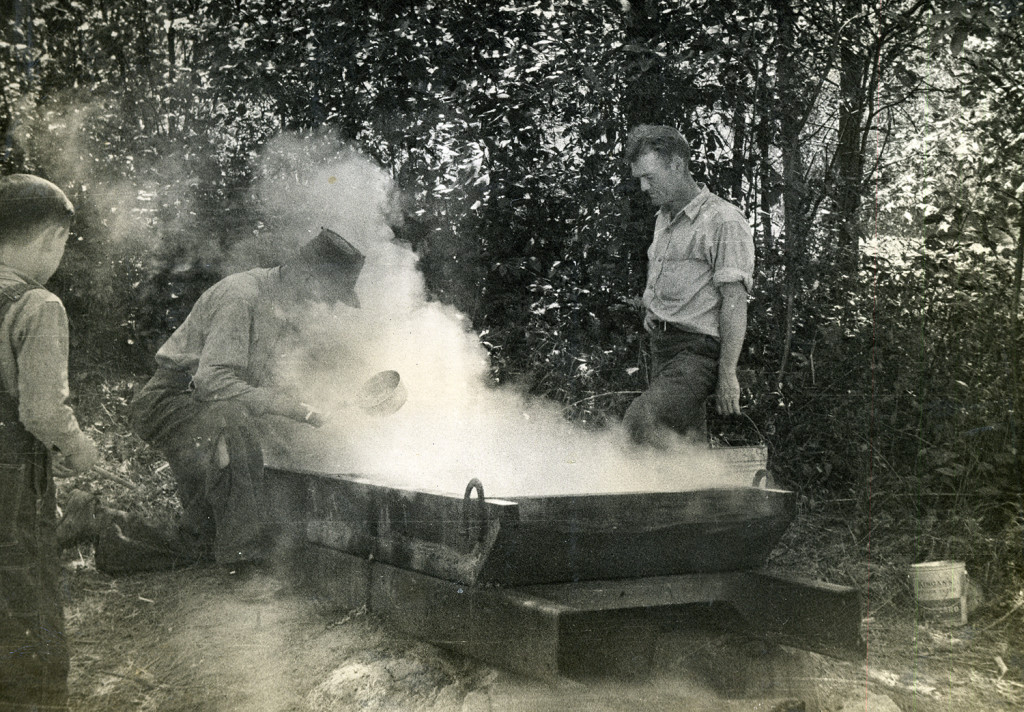Pine Mountain Settlement School
Series 11: FARM AND FARMING
Sorghum Molasses Stir-Off
History, Memories, Bibliography
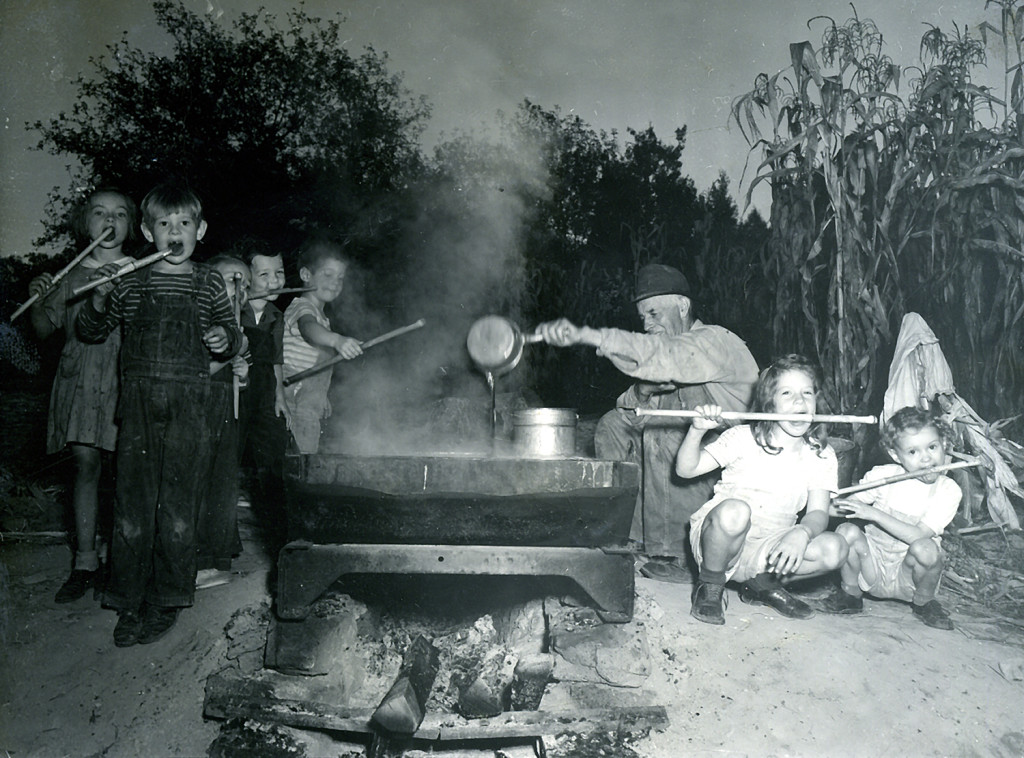
Children’s Stir-off, September, 1946. Mable and Ralph Cornett, Helen and Steve Hayes, David Barry, Mr. Creech, Kathy Barry, Elizabeth Dodd. [nace_1_047a.jpg]
TAGS: sorghum molasses stir-off, sorghum syrup, cane, farm, farming, Marguerite Butler, Henry Creech, molasses, sugar cane, Abner Boggs
FARM Sorghum Molasses Stir-Off
The sorghum molasses stir-off is a sweet and sticky affair. A good spoonful of sorghum, or better, a cane dipped in hot sorghum from a stir-off, is a memory that many families living in the mountains of Eastern Kentucky continue to cherish. The tall broad-leaf sweet sorghum plant resembles corn in the field and is best known for the syrup that can be made from its juice. It has been said that Kentucky produces some of the best sorghum in the United States. It is a product that I go out of my way to find in farmers’ markets and continue to find a multitude of ways to use.
As early as 1918 staff were writing about the virtues of sorghum. Marguerite Butler‘s October 1918 letter states:
“… Breakfast for 14 served in style and cooked over campfire is no joke — shredded wheat, strawberries and cream, ham, fried eggs, fried apples, biscuit and butter, coffee, then hoe cake and sorghum. We cooked everything there and served. They all had a lovely time. Henry [Creech], as member of the local advisory board, was invited and he was tickled. He told early tales of Uncle Wm. & Pine Mt…”
Marguerite Butler Letters 1918
I can think of nothing so satisfying on a cold morning as a hot-buttered biscuit with warm sorghum running between the fingers or even down the chin. This note and others, as well as photographs found in the Pine Mountain archive, provide a window into the production and use of sorghum molasses at the School. The production of sorghum molasses is a practice that has been resurrected many times throughout the history of the institution.
In September of 2018 sorghum was again “stirred-off” at Pine Mountain and the three batches were quickly bought by the Fair Day visitors, many of whom had enjoyed a stir-off in the community as children. This author, third from the left and licking a sorghum stick can well remember going home sticky and sugar-laden.
— H.W.
GALLERY I: Sorghum Molasses Stir-Off
-
-

Children’s Stir-off – Mable and Ralph Cornett, Helen and Steve Hayes, David Barry, Mr. Creech, Kathy Barry, Elizabeth Dodd. September, 1946. [nace_1_047a.jpg] -
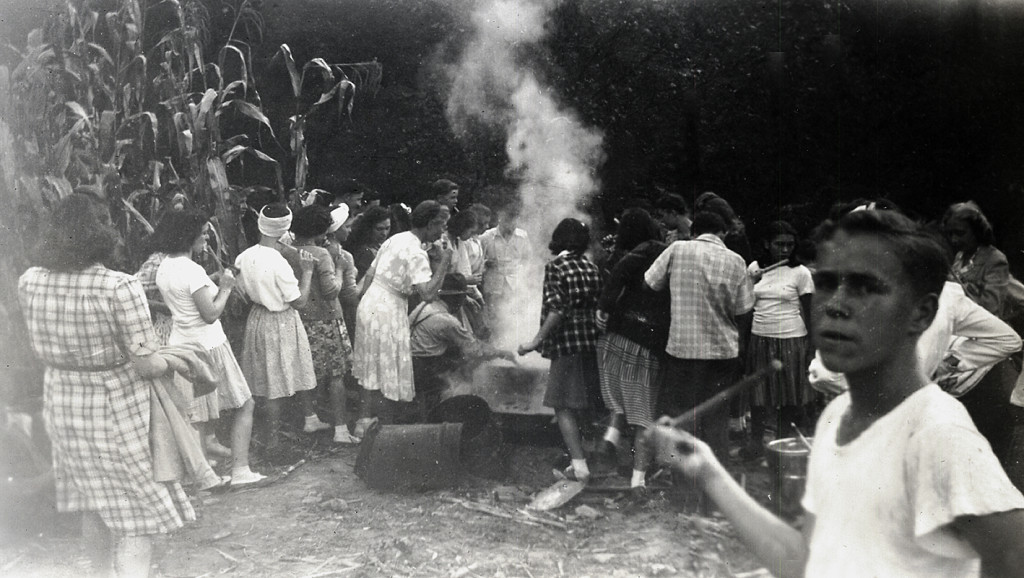
The school attends a stir-off [Sorghum/Molasses] at Henry Creech’s, 1946. [nace_1_046c.jpg]
DESCRIPTIONS: Sorghum Molasses Stir-Off [Pine Cone 1940]
DESCRIPTION OF A STIR-OFF AT ABNER BOGGS’ [From The Pine Cone, November 1940]
NEIGHBORS MAKE MOLASSES
A bit of education in an old Kentucky custom was given recently to a group of native Kentuckians and a Pine Mountain visitor at a molasses stir-off at the house of Abner Boggs on Big Laurel Creek.
At dusky dark, the bus left the campus with five community home visitors, Mrs. Carmody, Mrs. Bishop, Ila Boggs, and R.L. Huddleston who did the driving. When the group arrived Mr. Boggs had already ground the sorghum juice out of the cane and had it in a huge pan with the furnace roaring underneath it. He explained that the pan was made of wood, covered with metal, and dabbed with mud and clay to prevent burning.
Six persons in this group of nine had never attended a stir-off before and said that they had not felt like Kentuckians without this experience.
Mr. Boggs went on to explain that the syrup would boil down more than one-half before thick enough to pour off. “This furnace,” said Mr. Boggs, “is the worst one I’ve had in thirty years I’ve been making molasses.” Even with that excuse, the juice seemed to be boiling very rapidly.
While Mr. Miller and Mr. Boggs tended the furnace, everyone present enjoyed a circle of Kentucky running sets. Ann Turner, the caller, sat on a huge rock high above the road while the runners danced in the road below.
When the dancers tired they returned to the fire to whittle out paddles to dip into the pan of boiling juice, while several of the Greasy Creek folks sang ballads. Arn Turner with Flowd Harris sang the ballad “Cabbage Head.” With the aid of a guitar, Eldon and Ran Boggs sang “Willie Weaver.” The “Nightingale and the Cuckoo were sung by Nancye Boggs, and later Abner sang his favorite ballad, “Lolly Too-dum”.
Mr. Boggs is a great singer of ballads and it is commonly said that he could sing a whole night through without repeating a single ballad twice.
With the paddles whittled from timber found in the field, everyone dipped hot foam from the boiling sorghum juice which was in the process of becoming molasses.
Much to everyone’s regret, the Pine Mountain visitors had to leave before the juice was thick enough to pour off. Mr. Boggs explained how the juice would be kept at a steady boil for three hours longer. Mr. Boggs laughed and said, “This sure is lots of trouble but a little bowl of that on the table during the winter months sure does taste good.” [The Pine Cone, Nov, 1940, vol 5 no.2, pp. 2-3]
DESCRIPTION OF A STIR-OFF AT UNCLE HENRY’S HOUSE ON ISAAC’S CREEK
[From 1944 NOTES]
You who have been using the 1944 Pine Mountain calendar have during October looked many times at the picture of a “stir-off” at Henry Creech’s place. When sorghum is plentiful, and the weather is right it is Henry’s good custom to invite the whole school for an evening “stirring off.” Early in September, we began asking each other when the cane would be ready, and presently on the heels of our wondering came the invitation. All of us knew that day since dawn. Cane cutting had been going along down on Isaac’s Creek, and all being well, we would “stir off” about eight o’clock.
We tramped up the creek as dusky dark changed to night, and our torches were stars strewn all down the road, from the speedy vanguard to trailers clambering over the stile above Big Log House, a shouting, singing crowd. We rounded the last bend to see the fire glowing in a gulley below, close to the creek, and Henry Creech’s dark figure weaving shadows with the swinging lantern. Early arrivals clustered about the fire, whittling ends of cane for us to dip the foam with. While we waited for the foam to be ready the group settled here and there to sing ballads or run sets on the grass. The steady hand-clapping of the dancers and the shrill calls of the leader accompanied strains of “Sourwood Mountain” and ‘The Ground Hog”.
As usual, there were newcomers to the mountains who had never heard of a stir-off and we asked Henry if he would tell the new ones all about the process.
“You have to cut the cane and then strip the stalks and seems like one or two men working on the job can do more than all the women you could set to it in a day. I don’t know why, but it’s that way. You have to put the stalks in the cane mill, and then hitch up the horse, so he pulls it around and around, and then the cane juice drips down the spout in the tub and you pour it in the trough here.”
Henry C. Creech
He paused to adjust the lantern, and we looked at the trough, which was like a wide flat boat divided into two sections and about three-quarters full of dark liquid, now beginning to foam on the top. It was not yet ready because the foam was still green, although some of us were licking green foam to Henry’s mild disapproval. He said it “would cause stomach complaints” before it was ripe.
“Then you cook it, and it has to cook for about eight hours, ’till it boils up and foams over the top, and when the foam comes on you skim that off and throw it away—and finally it’s a nice yellow foam, and that’s when it’s good for licking—and then you decide when it’s done and pour off the molasses in a lard can, and that’s all.” Henry C. Creech
It was not all really, for by the end of the explanation the foam was ready for dipping. This, we should explain, is done with paddles, which are cane stalks with flattened ends, used like spoons. (To be sure it takes time for the uninitiated to get used to the idea that everybody can hygienically dip into a common trough of boiling sorghum.) 120 paddles dipped, 120 eager tongues tasted and licked, before sorghum melted in the trough before our eyes.
But we tasted more than sorghum. We tasted the joy of a real country function. Here in the mountains, our social occasions are made of simple homely happenings. A “working” is when we gather to help a neighbor and have dinner together. A “sanging” in the old days was a picnic made up of neighbors who went out and camped while they hunted ginseng or “sang” to sell. At a bee-robbing, a brave “robber” takes the honey from his hives and we guests eat it, comb and all, in great sweet chunks. A bean-stringing is work made play, and work that we will relish all next winter.
The stir-off ended. But the “sweetenin” we eat some dreary day next February will bring back the wood-smoke and firelight. [NOTES – 1944, Author unknown, probably Alice Cobb or Dorothy Nace.]
GALLERY II: Sorghum Molasses Stir-Off
-
-
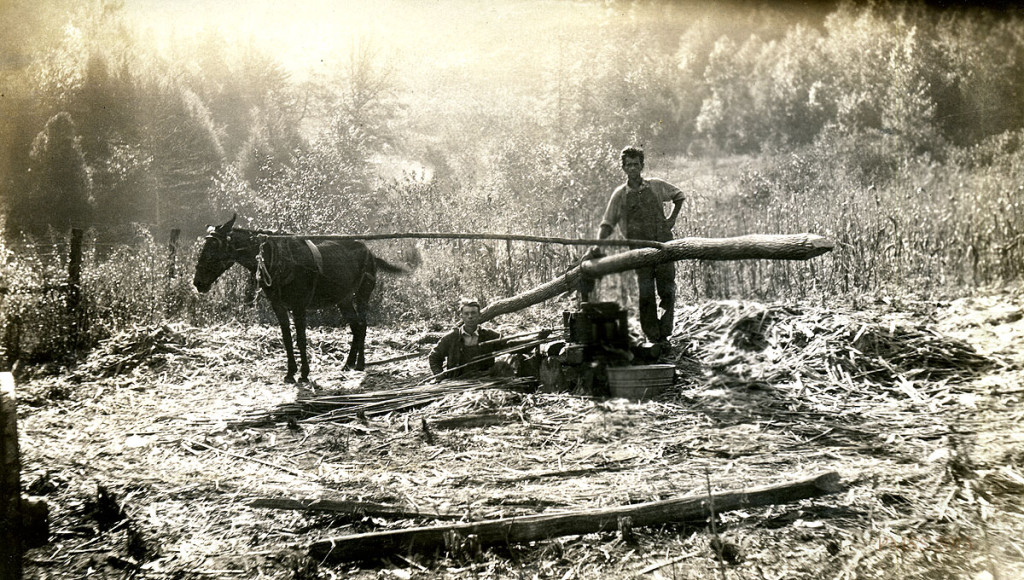
Sorghum milling with mule. [kingman_007a] -
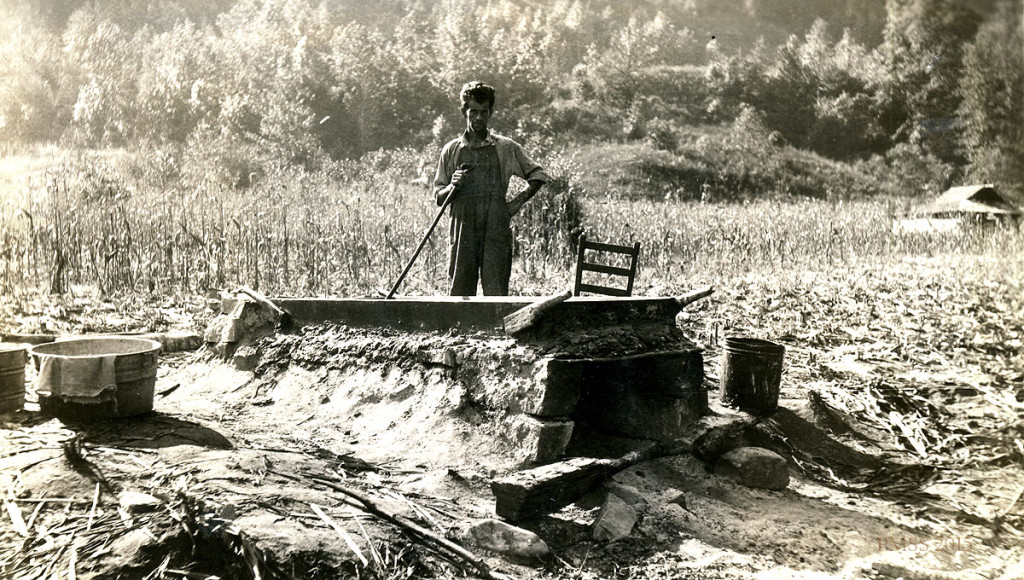
Tending the sorghum pan. [kingman_007b] -
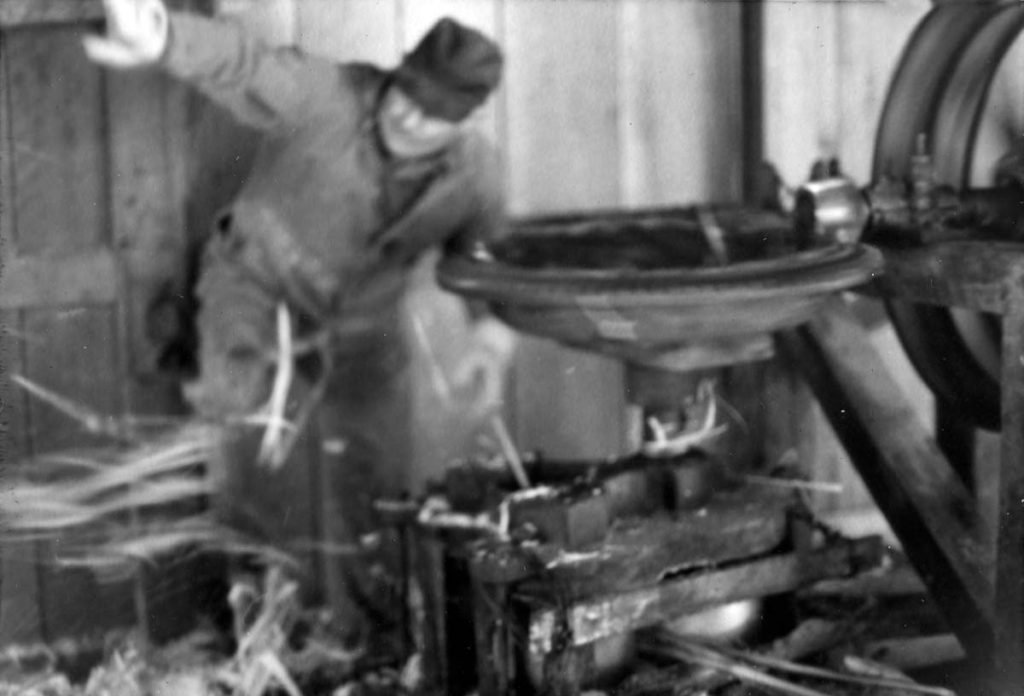
Sorghum production. [VII 64_life_work_025c.jpg] -

Sorghum production. [VII 64_life_work_028d.jpg] -
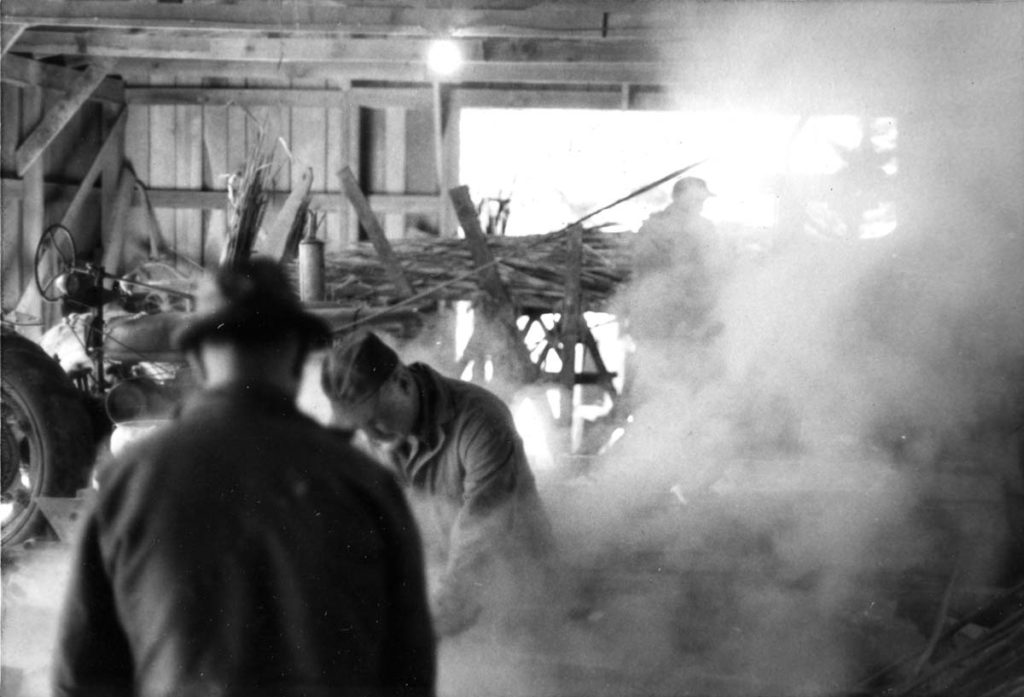
Sorghum production. [VII 64_life_work_028a.jpg] -
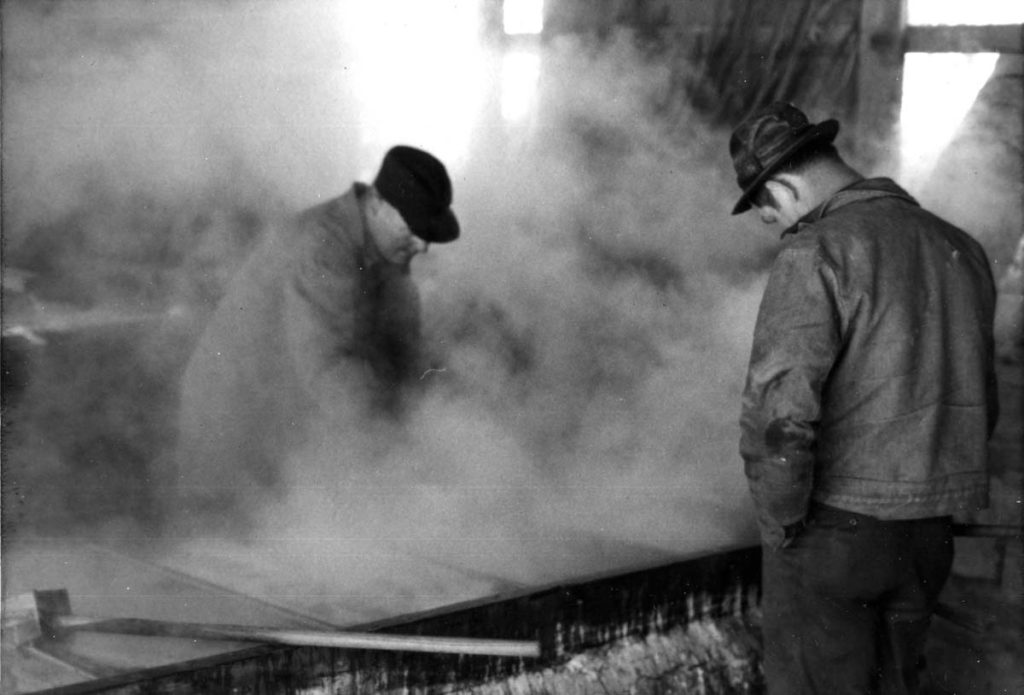
Sorghum production. [VII 64_life_work_027d.jpg] -
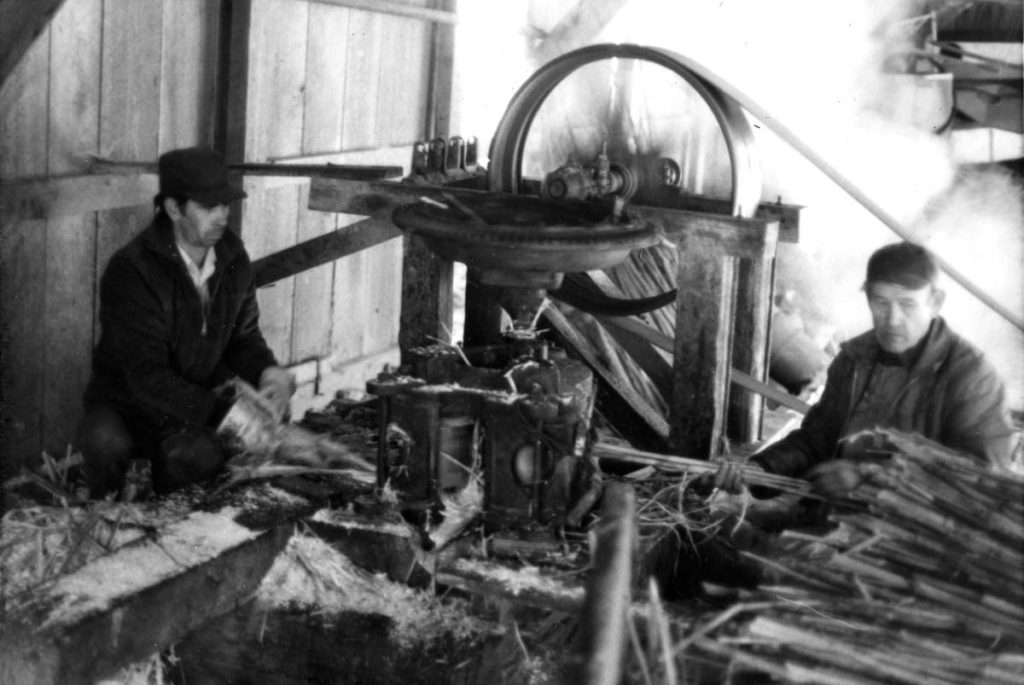
Sorghum production. [VII 64_life_work_027c.jpg] -
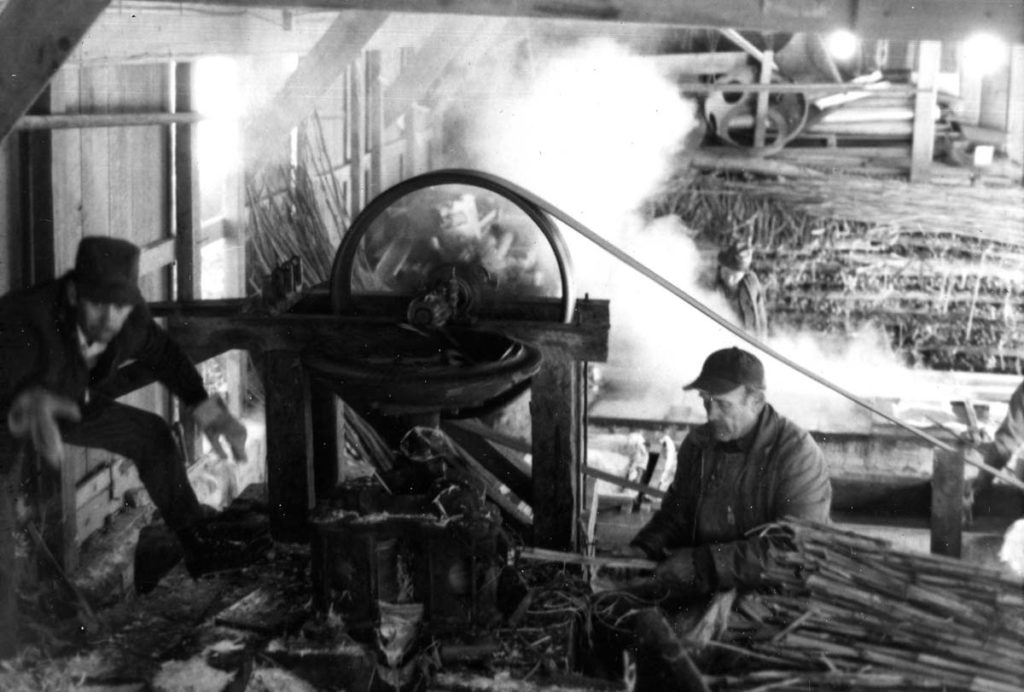
Sorghum production.[ VII 64_life_work_026c.jpg] -
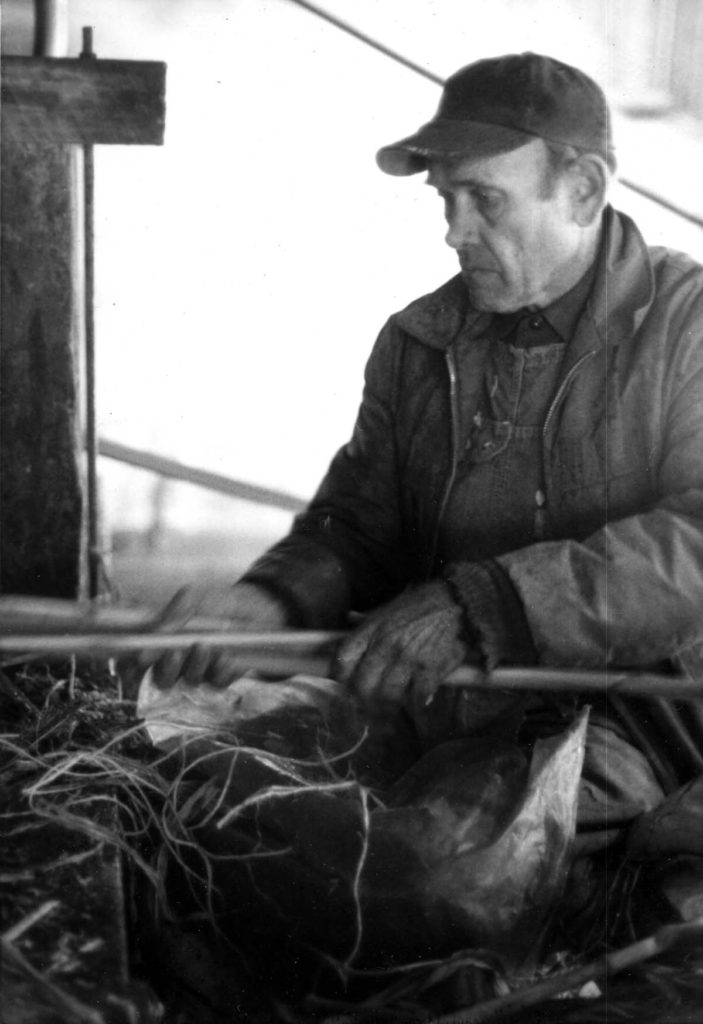
Sorghum production. [VII 64_life_work_023b.jpg] -
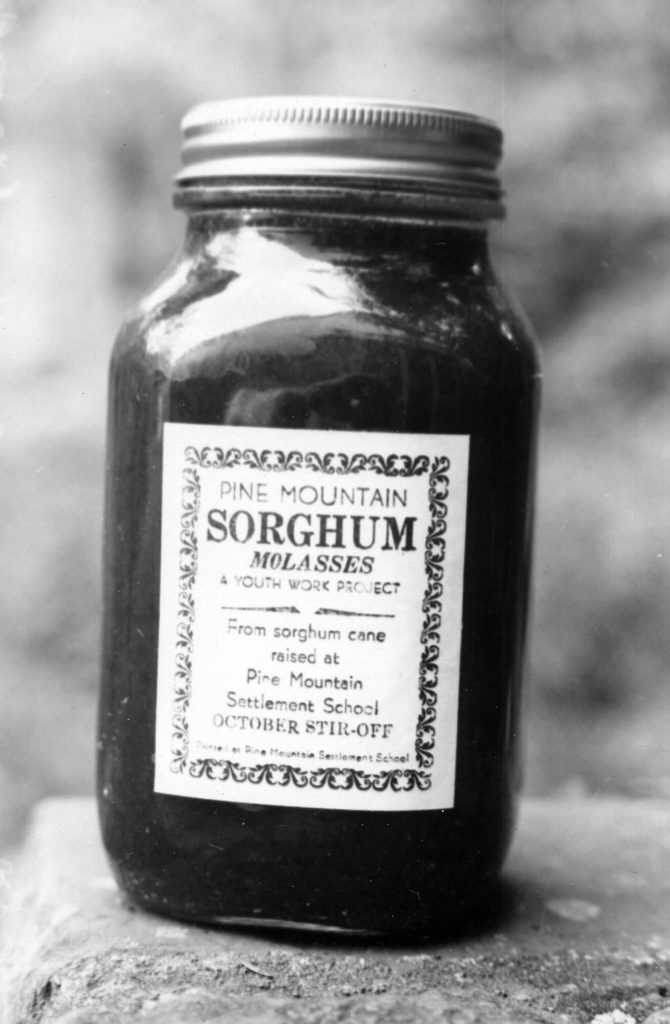
Sorghum, product of the Youth Work Project. VII 63 Life Work Maintenance, Farm, Grounds. B-1922. [VII_63_life_work_001-20.jpg]
-
BIBLIOGRAPHY: Sorghum Molasses Stir-Off
For another take on the “Stir-Off” as a community gathering see “The Stir-Off, A Story,” by James Still in the Fall 1941 Mountain Life and Work, Vol. XVII, No. 3, p. 3-7.
Cobb, Alice. Sect Religion and Social Change in an Isolated Rural Community of Southern Appalachia: [with] Case story: Fruit of the Land. Boston University Thesis, 1965. An extensive discussion of stir-off and its religious and social implications.
Still, James, Ted Olson, Teresa Perry Reynolds. The Hills Remember: The Complete Short Stories of James Still, Lexington: University Press of Kentucky, 2012.
Thomas, Charlotte Wright, Martha Vanskee. Sorghum Time, University of Kentucky Bureau of School Service, 1942.
Return To:
FARM and FARMING Guide

